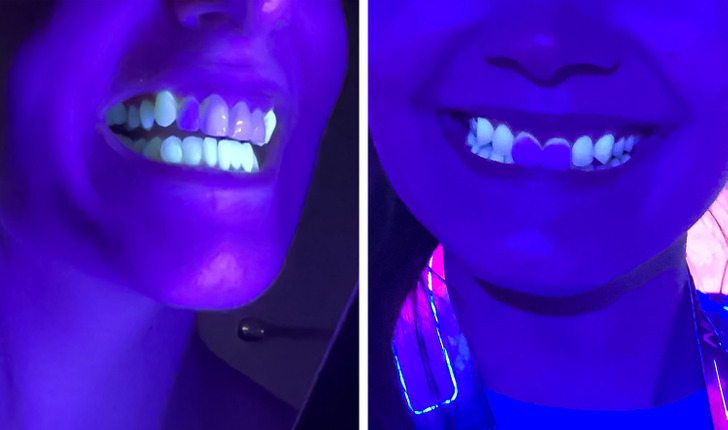What Veneers Are, and How They’re Different From Crowns and Implants

Dental veneers are thin shells constructed of either composite or dental porcelain. They are put on the front surface of the teeth to make them look better, protect them from damage, and give the person who has them a beautiful smile.
5-Minute Crafts is going to tell you why veneers are used, how they are installed, and what drawbacks they have. We will also explain the difference between veneers, crowns, and implants.
❗The information in this article is simply informational. Before making a decision about getting veneers, consult your dentist.
Why veneers are used
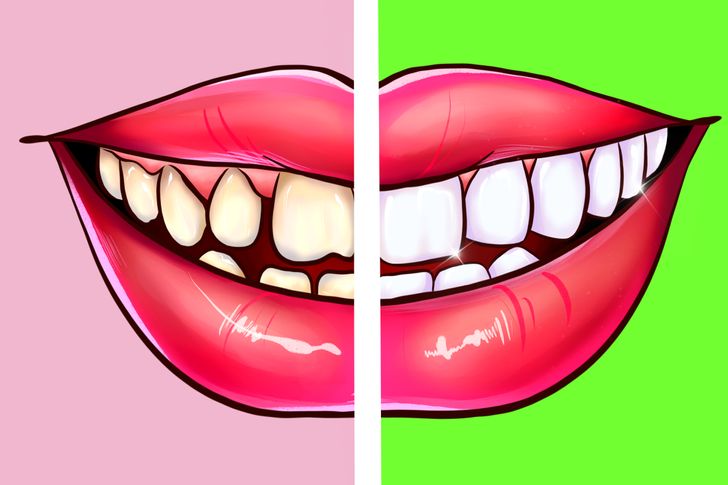
Veneers are used for teeth restoration and help to do the following:
- They make teeth look white for a long time, especially if they’ve gotten darker because of food or a loss in luster over time. The latter might happen because of some medications, too much fluoride in the body, or various dental procedures.
- They can remove cosmetic problems, like cracks, dents, big gaps between the teeth, and other issues.
- They can replace damaged enamel if it’s bad (like due to teeth grinding, for example).
- They can protect sensitive enamel from damage.
Drawbacks of veneers
- A high price: The price for one tooth can vary from $900 to $2,500.
- Irreversibility of the procedure: Before the installation of most veneers, the teeth are filed so that the shells have enough space. After that, you can’t remove the veneers and restore the enamel. The only exception is when you are planning to get even thinner shells, known as lumineers.
- The color of the shells might vary from the color of other teeth. Usually, veneers are only put on the front teeth, so if the color is not chosen correctly, it might differ from the color of the rest of the teeth. This will be impossible to fix.
- Some veneers are impossible to repair. If they crack, you will have to get new ones.
- They can result in sensitive teeth. For 3 weeks after the procedure, you might have very sensitive teeth. In some cases, it might stay that way for 3-6 months. You will have to see a doctor if this happens.
What kinds of veneers there are
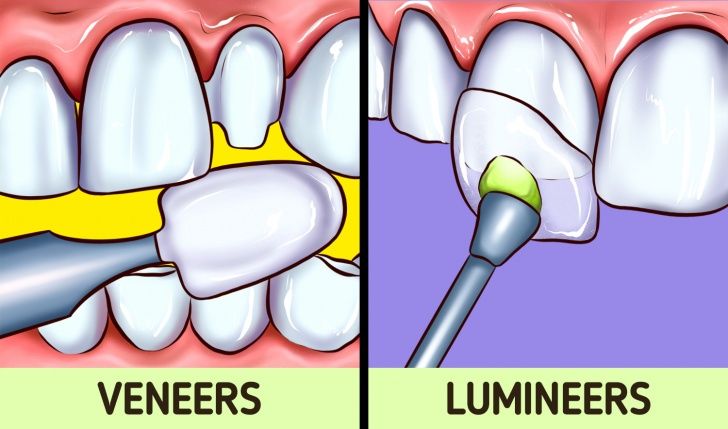
Veneers can be:
- Ceramic. This is the most popular material used to make veneers. They have a natural color, individual shape, and they last a long time (10-15 years). Besides, no spots appear on them. However, they take a few weeks to produce, they are more expensive than composite veneers, and if there are dents on them, they need to be completely replaced.
- Composite. They are made of tooth filling material so they are a bit cheaper than ceramic veneers. They are made quickly. But they only last for 5-7 years and they can be repaired.
- Lumineers. They are ultrathin and half-transparent veneers (less than 0.2 mm). They are the same shape as the teeth and they have a natural enamel color and don’t require any teeth preparation. They might last for 20 years but often break, so they need to be replaced.
- Removable. They look like mouthpieces. These veneers can be removed at any time, the price is cheaper, and the installation is not as bad for the enamel. But these veneers are not very convenient and may have to be replaced often.
How veneers are installed
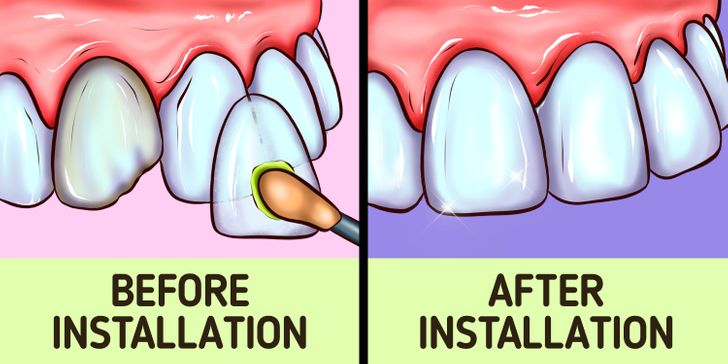
1. Your dentist will examine your teeth to make sure you can get veneers. They will also do x-rays.
2. The doctor will remove about 0.5 mm of the enamel on the front and back to make room for the veneers. If you are getting lumineers, this step is not necessary.
3. The dentist will make a cast of your teeth. Together, you will choose the color shade you like the most.
4. You will get temporary veneers. You will wear them until the real ones are made. It might take a few weeks. If you are getting composite veneers, you will get them that same day.
5. The next time you see a dentist, they will remove the temporary shells and put on real ones. They will put special cement on the shell and put it on the tooth. After the veneer is correctly positioned, the doctor will use a special lamp to make the material solidify fast.
6. At the end of the procedure, the doctor will remove the excess cement, check the bite, and make some adjustments if necessary. Your dentist may ask you to return for a follow-up visit in a couple of weeks to check your gums and the placement of the veneers.
How to take care of veneers
Dental veneers don’t require any specific care. Just keep on following your regular routine: brush your teeth, use floss, and mouthwash.
Even though ceramic veneers are resistant to spots, dentists should still warn you against eating foods and drinks that might change their color.
Veneers usually last from 7 to 15 years. After that, they should be replaced.
What’s the difference between veneers, crowns, and implant
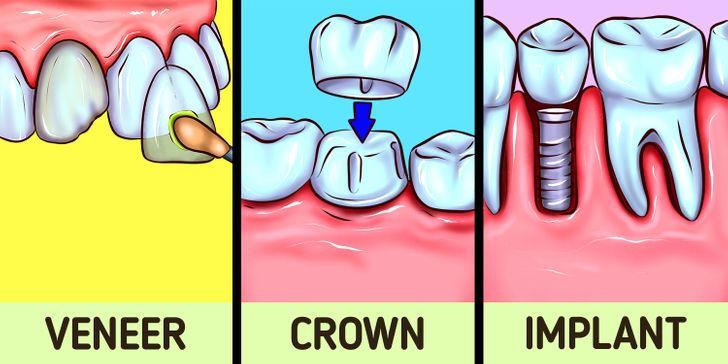
Veneers are glued to the front part of the teeth. They are thinner and more fragile than crowns. This means there’s a higher risk of damage. They are used only for cosmetic purposes.
Crowns cover the entire tooth. They are thicker than veneers and require more of the tooth to be removed. Crowns are more durable than veneers, so they are used for restoration for badly injured teeth.
Implants are put into the bone tissue. They completely replace the root of a missing tooth. After that, crowns are put on top of them.
Bonus: Some veneers don’t glow under a black light.
In fact, it depends on the type of porcelain that the veneers are made out of. Not all porcelains will glow under a black light, but some other types of porcelain act like natural teeth. If you’re planning on getting veneers and the way they will look in the presence of a black light is important to you, discuss the material options with your dentist.
- I found out my veneers don’t glow in black light. sarahkbug / Reddit
- Had no idea veneers don’t glow. jrh079 / Reddit
What do you think about veneers? Is it worth getting them or are there more cons than pros?
